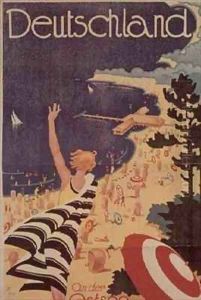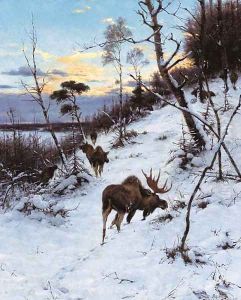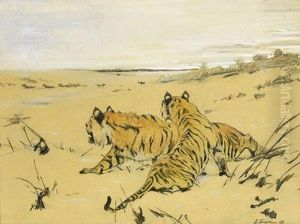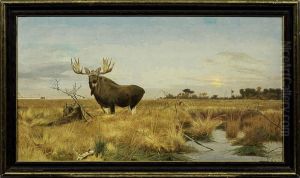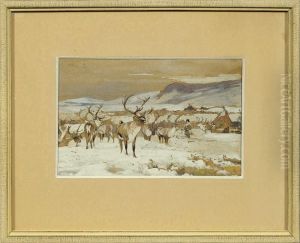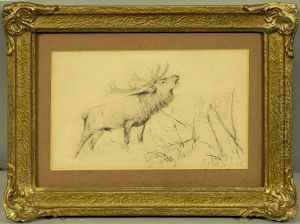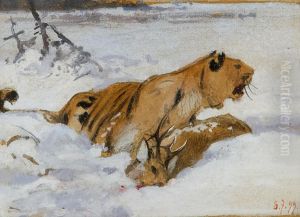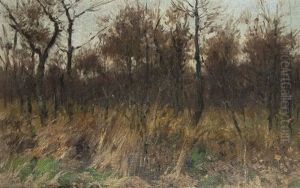Richard Friese Paintings
Richard Friese was a notable German painter, born on October 15, 1854, in Gumbinnen, East Prussia (now Gusev, Russia). He is particularly known for his realistic and detailed depictions of animals, with a special emphasis on wildlife and hunting scenes. Friese's work is characterized by its meticulous attention to the anatomical accuracy of the animals he portrayed, bringing them to life on canvas with a vivid sense of naturalism.
Educated at the Academy of Fine Arts in Königsberg, Friese further developed his skills by studying at the Berlin Academy under the guidance of Paul Friedrich Meyerheim, a well-known animal painter of the time. Friese's passion for wildlife and the natural world was not only reflected in his art but also in his lifestyle; he was an avid hunter and outdoorsman, experiences that undoubtedly helped to inform his artistic work.
Friese's talent was recognized early in his career, and he received acclaim for his ability to render the textures of fur and feather, as well as for his understanding of animal behavior. His paintings often captured the dramatic intensity of the wilderness, making them popular among art collectors and enthusiasts of the time.
Throughout his career, Friese exhibited his work in various European cities, gaining a reputation that transcended German borders. His paintings were often large in scale, ambitious in scope, and they conveyed a romantic view of nature that was consistent with the sentiments of the late 19th and early 20th centuries.
The outbreak of World War I in 1914 had a profound impact on Friese and his work. The war brought about a decline in the market for fine arts, especially for the kind of grand, naturalistic paintings that Friese was known for. Despite these challenges, he continued to paint until his death in 1918.
Richard Friese died on November 10, 1918, just before the end of World War I. His contributions to the field of wildlife art remain significant, and his paintings can be found in various museums and private collections. His work is a testament to the genre of animal painting in Germany and to the broader 19th-century European tradition of portraying the natural world with both scientific accuracy and artistic beauty.
